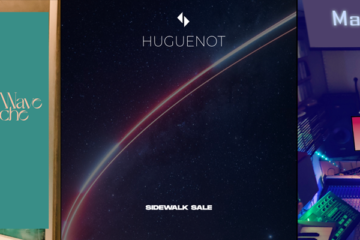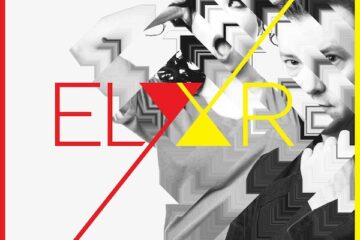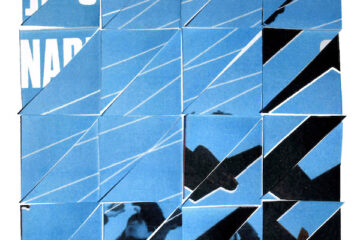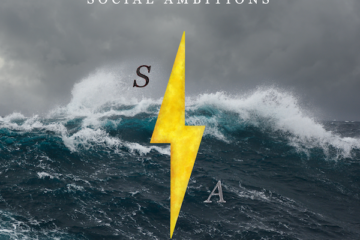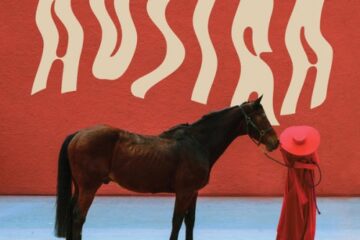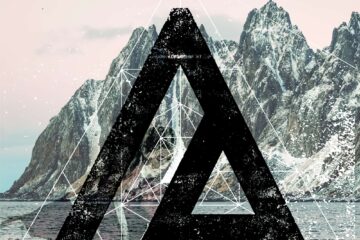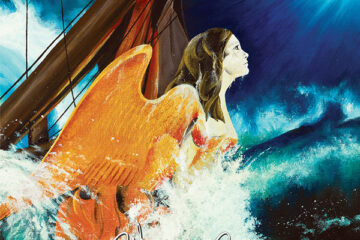
“Creatively, I felt like I’d come home. I was enjoying it all again, I was thinking better, my mind was wandering like it used to. Most importantly, it was fun again” – Gary Numan
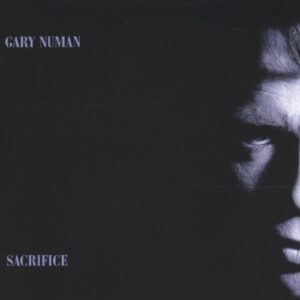 Sacrifice has often been cited as the dawn of Gary Numan’s career renaissance in the mid to late 1990s but, unusually for such a milestone release, it is currently unavailable in its original, extended and reissued formats. Whilst it isn’t held in the same regard as, say, Pure or Splinter (Songs From A Broken Mind), it’s a key album in the discography. It saw Numan working from a black canvas; both in terms of its dark sleeve and its lyrical content, which saw the former synthesizer superstar flirting with horror, and atheism; backdropped by a cold, industrial soundtrack.
Sacrifice has often been cited as the dawn of Gary Numan’s career renaissance in the mid to late 1990s but, unusually for such a milestone release, it is currently unavailable in its original, extended and reissued formats. Whilst it isn’t held in the same regard as, say, Pure or Splinter (Songs From A Broken Mind), it’s a key album in the discography. It saw Numan working from a black canvas; both in terms of its dark sleeve and its lyrical content, which saw the former synthesizer superstar flirting with horror, and atheism; backdropped by a cold, industrial soundtrack.
Both financially and professionally, the first half of the 1990s proved to be a turbulent period for Gary Numan. Without a top ten hit since 1982, each subsequent album release saw the former Tubeway Army frontman deviate further and further away from his original John Foxx-influenced sound; flooding his over-produced recordings with saxophones, wailing female backing vocals and flashy guitar solos. He would of course reach his career nadir in 1992 with Machine and Soul, a largely horrific collection of over-long, Prince-inspired pop-funk workouts that has long since been denounced by its creator. As Numan himself observed: “It is the most ‘non-Numan’ album I’ve ever made, for my style, sound and character are completely missing”.
To some observers, a support slot on Orchestral Manoeuvres in the Dark’s Liberator tour in December 1993 was a sign of just how far Gary Numan’s star had faded since his early 1980s peak. In the early throes of their career, OMD had once supported Numan in 1979 on his Pleasure Principle tour. But this was no changing of the synth guard – the fact was, Numan had been added to the bill due to poor ticket sales and OMD (who would not tour the UK again until 2007) were promoting Liberator, a poor-selling and critically-derided album. Numan, who’d recently completed his successful Dream Corrosion tour, gratefully grasped the opportunity to play in arenas again for the first time since 1981. Mixing recent material with classic hits and album tracks, his band now included Mark Eldridge (aka Kipper), who would later go on to work with Sting, and future Björn Again member, Teresa Jane Davis, who provided both backing vocals and eye-catching outfits!
While many fans and music historians point towards Machine and Soul as the catalyst for Numan’s resurgence, the seeds of his creative comeback can actually be traced to 1991 and his soundtrack work with regular collaborator Michael Smith on the low budget horror movie The Unborn. A long held ambition of Numan’s to work in the film field, the project proved to be a perfect fit for him. Within the confines of his newly built Outland studio, the sessions proved to be extremely fruitful and the pair came up with over 100 sound vignettes, many of which would later be collated on the 1995 release, Human. Some of these ideas would also provide the springboard for future albums, including Outland and Sacrifice.
Aside from hitting a crossroads in his professional life, 1993 also marked a turning point in his personal circumstances. Following a split with long-term partner Tracey Adam, Numan began dating a fan named Gemma O’Neill who would prove to have a positive effect on the next stage of his career. Providing career guidance as well as companionship, she would prove to be a steadying influence over the next few decades. As Numan recalls in his excellent memoir, Praying To The Aliens: “She gave me the confidence to step back into the studio and let whatever was inside me come out.” By the end of the year Numan had not only commenced work on his next album but, under O’Neill’s advice, he’d also started to integrate older material into his live sets.
The new year would prove to be a busy one for Numan. He kicked off 1994 promoting the ‘Like A Refugee (I Won’t Cry)’ single, an uncharacteristically celtic-flavoured collaboration with masked Italian percussionists, Dadadang. Penned by Hugh Nicholson (a former member of Radio Heart that had included Numan), its lyric was loosely based upon Yugoslavia’s refugee crisis in the early 1990s. Numan would also collaborate with soul singer Mike Allen on a version of ‘Are ‘Friends’ Electric?’ (billed as Generator featuring Gary Numan).
There were a brace of releases on the self-funded Numa label too, including double CD and VHS video versions of Dream Corrosion (a fine document of the previous year’s October tour) and the soundtrack album The Radial Pair that accompanies the video of accomplished airshow pilot Numan performing aerobatic stunts with Norman Lees (who would sadly tragically perish in a spitfire crash in 2000).
Due to financial constraints, Numan was, effectively, running a cottage industry during this busy period. Following his split with Tracey Adam, he took a crash course in desktop publishing and took on the responsibility of providing album artwork, t-shirt and programme designs (under the guise of NuFederation). This was of course in addition to overseeing the writing, playing, production and engineering on Sacrifice. The Dream Corrosion and Radial Pair sleeves are decidedly rather amateurish, but Numan learnt quickly and produced a sleeve for Sacrifice that perfectly complemented its contents.
It’s some of the instrumental Radial Pair recordings that provide the backbone of the Sacrifice album, showcasing a harder and more industrial sound, and stripped of the Jam and Lewis-influenced beats that had permeated much of Numan’s recent material. Live audiences were already used to hearing the choral-flavoured ‘Mission’ at the start of each show; a portent of what was to come. Lyrically, Numan was inspired by the work of horror writer Clive Barker (in particular, Weaveworld and Imajica), while other lyrics stemmed from an unfinished novel of Numan’s, tellingly-titled Pray: The Final Treachery of God.
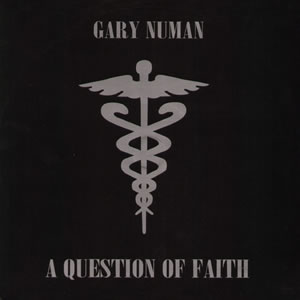
Sacrifice was preceded by the single ‘A Question Of Faith’ (in an edited ‘agnostic’ version) in October 1994. Boasting a Depeche Mode-esque title, Numan would single out the Basildon outfit’s blues and gospel-tinged Songs Of Faith And Devotion as being a key influence during the recording of Sacrifice. This is evidenced by tracks such as ‘Mercy In You’ and ‘Get Right With Me’; their drum patterns appearing to have a significant percussive influence. As he told The Quietus in 2012: “It’s a huge album for me and re-kindled my love of darker music. It’s a massively important album and it helped to massively change my own direction and I’ve been going out in that direction ever since”.
‘A Question Of Faith’ was the first of many tracks whose blueprints had originally been laid down on the Human and Radial Pair recordings. According to Numan, its lyrics dealt with obsession, while the chilling postscript asked those who “kneel down [and] praise God” whether they questioned their faith in the wake of the James Bulger murder the previous year: “When children kill children / Don’t it make them wonder? / Don’t it make them question their faith?” Certainly not a track for sensitive Radio One listeners and, indeed, neither the single nor its parent album would trouble the charts.
Another key track on the album was ‘Deadliner’. Listeners were invited into Numan’s head as he vividly recalled a disturbing and unsettling nightmare via a series of bleak spoken word verses: “I’ve known fear many times but nothing like this / I’m so scared I can’t breathe / I know I’m asleep but I know this real”. With its ghostly use of piano and trademark woahs, it quickly became a fan favourite. Equally impressive was ‘Love and Napalm’, a more riff-based affair that harked back to the Replicas period, offering Numan the opportunity to showcase some rarely used guitar skills.
Another highlight on the album was Numan’s beautiful ode to Gemma O’Neill, ‘You Walk In My Soul’. Not only did it offer some lyrical respite from atheistic tracks such as ‘Desire’, it added some colour to an otherwise cold and – at times – heavy-going collection. Musically it picks up from where ‘Love Isolation’ left off on Machine and Soul, with its scaled down use of backing vocals and lovely choral touches (courtesy of a well used Korg M1). The track would later be played at Numan’s wedding to O’Neill.
Whilst the album often suffers from its use of some rather unimaginative and repetitive drum loops, the album put Numan firmly back on track. A tour-closing show at the end of the 1994 saw Numan in both confident and defiant form, even daring to drop number one hit ‘Cars’ from the set list. The comeback had begun…
http://garynuman.com/
https://www.facebook.com/GaryNumanOfficial/
https://twitter.com/numanofficial
- QUEEN’S MACHINES – How Music Changes Through The Years (1979 – 1984) - July 25, 2021
- SUGAR RUSH – The Story of ‘Sugar Tax’ - May 7, 2021
- Survival – The Story Of ‘Machine and Soul’ - April 30, 2021


